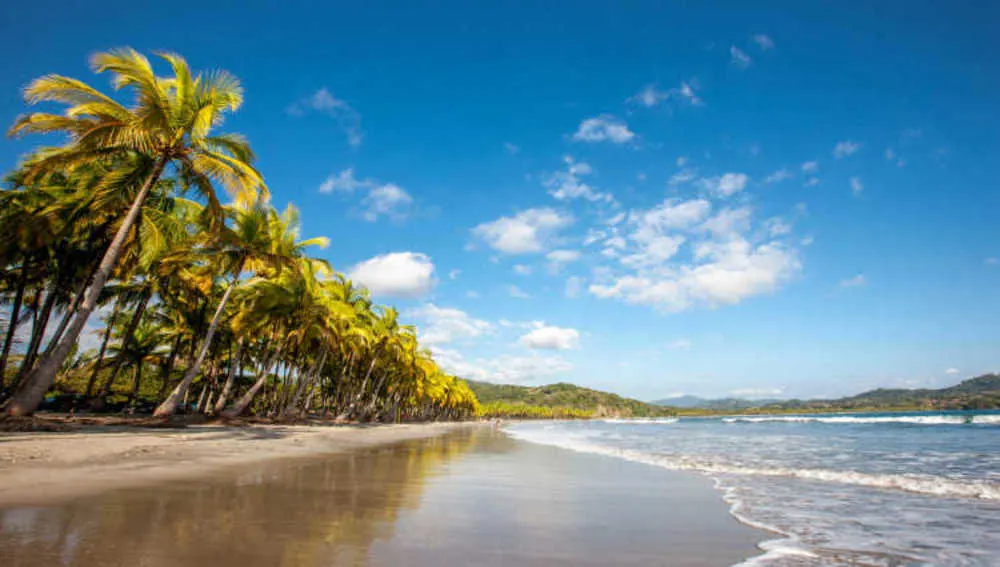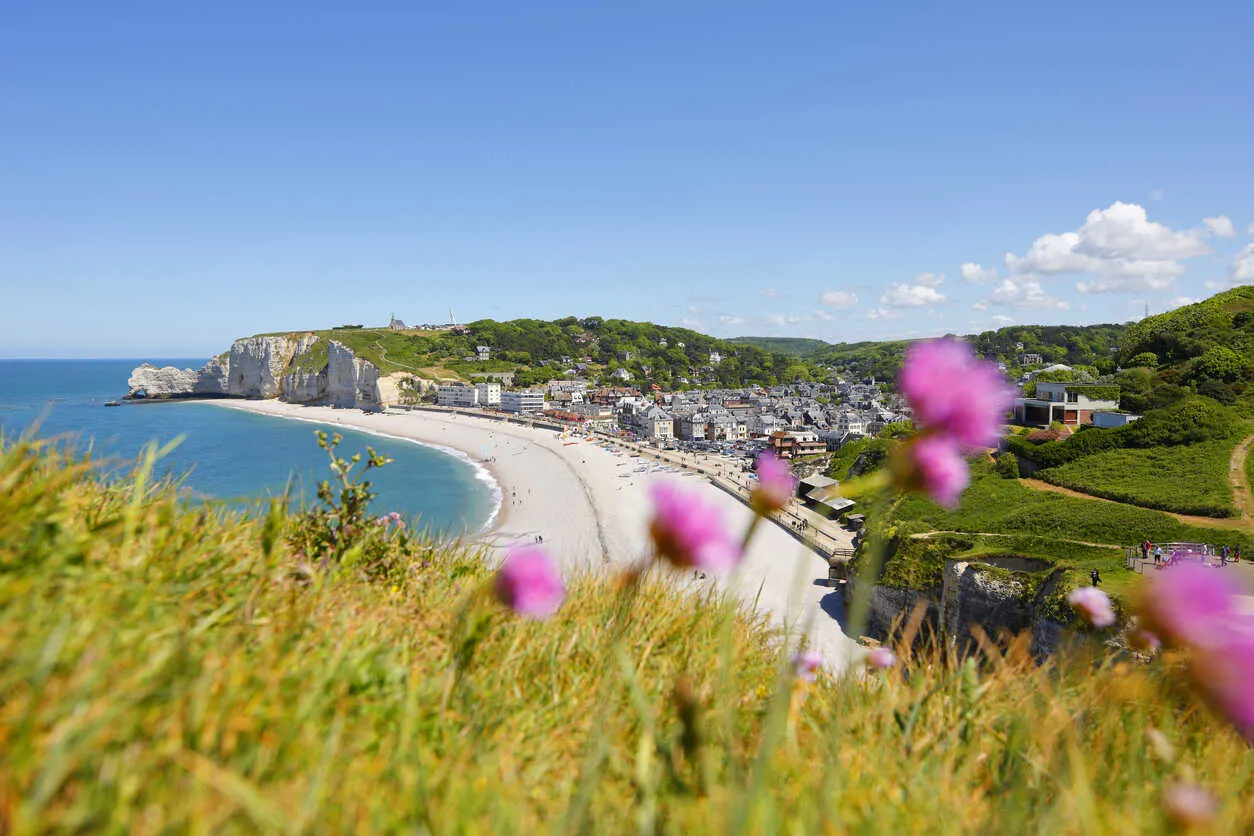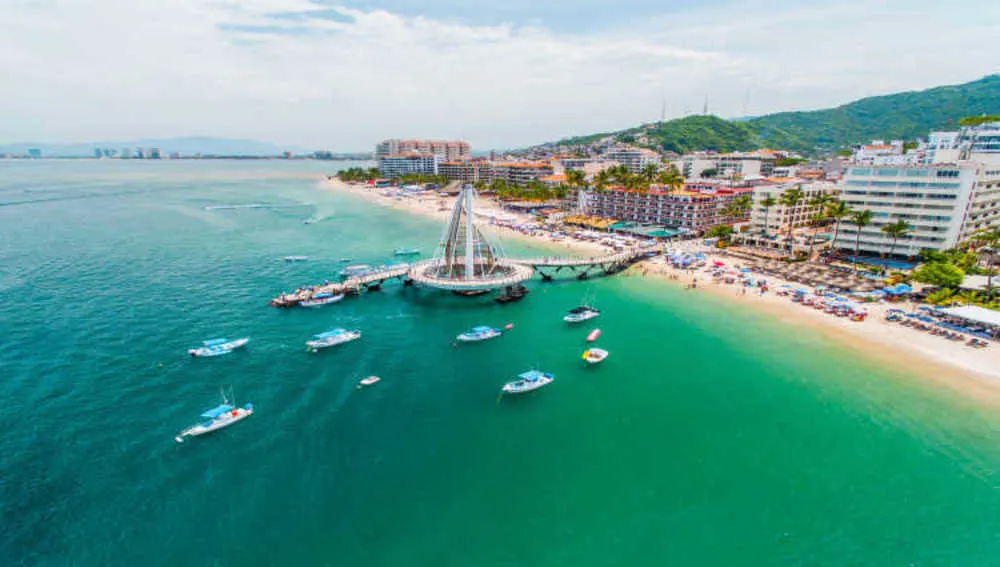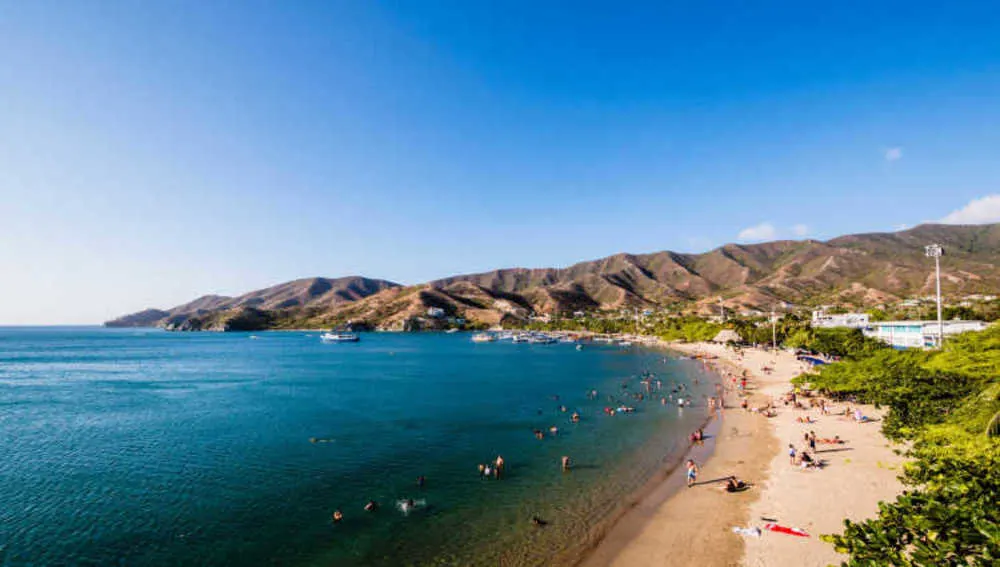While the term “perfect climate” means something different for everyone, in International Living’s 2025 Annual Global Retirement Index, we’ve compiled a list of countries with the most varied weather systems to suit every preference.
In this category, we’ve considered specific criteria such as temperature, rainfall, humidity, and sunshine, as well as the personal experiences of expats and our boots-on-the-ground correspondents, to score the nations with the most livable climates.
Whether your idea of paradise is a sunny Mediterranean beach or the freshness of a high-altitude town, four seasons, or eternal spring, our climate category is designed to help you discover your ideal weather haven.
Read why the countries below made our top five list, and discover the 2025 titleholder of the best in climate category.
How To Move Out of the U.S.
How To Move Out of the U.S.
The policy implications of the last election impacted your retirement funds, taxes, healthcare, and more. But you can protect yourself, your family, your future. In lots of safe, warm, friendly spots abroad, you can live comfortably on a budget from $2,000-$3,800 a month (all-in—housing and extras included). We’ll show you how—and where—to go.

By submitting your email address, you will receive a free subscription to IL Postcards and special offers from International Living and our affiliates. You can unsubscribe at any time, and we encourage you to read more about our Privacy Policy.
5. Costa Rica
By Bekah Bottone

Costa Rica has something for everyone when it comes to climate—unless you’re seeking snow and freezing temperatures! This tropical country features seven distinct climatic zones: the North Pacific Coast, Central Pacific Coast, Monteverde Cloud Forest, South Pacific and Southern Zone, Central Valley, Northern Zone Lowlands, and the Caribbean Coast. The range of climates here lets retirees choose between warm coastal weather, misty cloud forests, and cooler highland regions, offering a little bit of everything.
On the North Pacific Coast, home to popular spots like Tamarindo and the Nicoya Peninsula, the climate is warm and dry. Temperatures generally range from 80-95 F year-round, with a long dry season from December to April, making this area perfect for snowbirds looking to escape colder winters. During the wet season from May to November, the afternoons typically bring refreshing showers that brighten up the landscape, leaving sunny mornings for enjoying the outdoors.
In the Central Valley, where you’ll find San José and towns like Atenas, Grecia, and Santa Ana, the climate is much more temperate. With daytime highs around 85°F and cooler nights in the 60s, this area is perfect for those who enjoy year-round spring-like weather without the intense heat of the coast. The valley’s elevation means cooler air and an abundance of outdoor activities. Kelly Clayton, a local business owner, highlights the diversity in nearby landscapes: "Within 90 minutes of my house, I can hike in a coffee farm, a jungle, an emerald green mountainside cow pasture, a pine forest, or a cool, misty cloud forest."
For those who love misty, cooler weather, the Monteverde Cloud Forest offers an entirely different experience. With its high altitude and abundant greenery, Monteverde is a haven for nature lovers. Meanwhile, the Arenal region, known for its iconic volcano and beautiful lake, features microclimates that can vary dramatically even within a short distance. Some spots around Lake Arenal may be rainier or windier, while others see plenty of sunshine, providing diverse weather within a single region.
Further south, the Central and South Pacific Coasts, which include places like Manuel Antonio, Uvita, and Dominical, bring together warmth and humidity, with heavy rains during the wet season that create lush, green landscapes. On the Caribbean Coast, towns like Puerto Viejo and Limón experience a tropical rainforest climate, with high humidity and rain throughout the year. The Caribbean’s weather is influenced by Atlantic trade winds, bringing sunnier periods in September and October, while other parts of Costa Rica are at their rainiest—a great option for retirees seeking more sunshine during those months.
The country’s climate patterns are also shaped by El Niño and La Niña phenomena. During El Niño years, drier weather prevails on the Pacific Coast, while the Caribbean tends to get more rain. The reverse happens during La Niña, with increased rainfall on the Pacific side and drier conditions in the Caribbean. It’s often best to experience Costa Rica’s different seasons before deciding on a location. Personally, when it rains for four or five days in a row, I feel the weight of the gray skies—until the sun returns, when I feel alive and grateful to call this tropical paradise home.
In my travels around the country, I have found that many retirees enjoy more moderate weather, as the extreme heat is often too much to handle. Therefore, life around Arenal and in the Central Valley usually offers the best of both worlds: cooler temperatures yet easy access to beaches when desired. National Geographic once reported that Atenas has “the best climate in the world,” making it a popular expat location.
For a more detailed look at the climate in Costa Rica, check out: Costa Rica Weather and Climate.
4. France

France offers retirees a climate that ranges from Mediterranean warmth to cool mountain breezes, making it one of the most attractive destinations for climate diversity. Southeastern France, particularly regions like Provence and Corsica, benefits from over 300 sunny days a year. The cities of Marseille, Nice, and Ajaccio offer warm, dry summers and mild winters, making them ideal for retirees seeking a stable, sunny climate year-round.
The Mediterranean climate in these areas resembles that of Southern California, characterized by warm, sunny days and minimal rainfall during the summer. Even in winter, temperatures remain relatively mild. This climate is perfect for those who enjoy outdoor activities and the beauty of coastal living. However, those who prefer to experience four full seasons can find a wide range of options across France, including the cooler, wetter regions in the north and west.
Inland areas, such as Toulouse and the regions surrounding the French Alps and Pyrenees, offer cooler temperatures and even snowfall during the winter months. This variety makes France appealing to retirees who might want to ski in the winter or enjoy cooler summer temperatures in the mountains. The higher elevations also tend to offer lower humidity, which can be a welcome relief for those sensitive to heat.
Northern regions like Brittany and Normandy bring a lush, green landscape due to frequent rainfall, making these areas ideal for retirees who love the charm of pastoral settings and don't mind wetter conditions. These regions also have milder summers, which provide a cool retreat compared to the warmer Mediterranean coast.
Some practical considerations for retirees include understanding flood-prone areas along the Rhône River and other parts of southeastern France. While these flood zones are not typically prime retirement locations, retirees should be aware of this when selecting a home. Most properties in the warmer, Mediterranean regions have air conditioning installed to handle the occasional summer heatwave.
France’s regional diversity means there is a climate for every preference, from sunny beaches and bustling coastal cities to the serene, cooler mountain towns. The availability of varied landscapes and climates makes France one of the most appealing destinations for those who want a retirement filled with both natural beauty and seasonal experiences.
For a more detailed look at the climate in France, check out: France Weather and Climate.
3. Mexico

By Bel Woodhouse
Mexico’s vast geography provides retirees with a broad range of climates, from tropical beaches to cool, temperate highlands. For sunseekers, the Caribbean coast and Yucatán Peninsula offer warm weather year-round, with high humidity balanced by refreshing ocean breezes. Temperatures typically stay between 80-90 F, ideal for those who envision retirement by the beach. Snowbirds often flock to this region in winter to escape the colder northern climates, taking advantage of the sunny days and mild winter nights.
The thing I love about Mexico is that no matter what climate you’re looking for, you’ll find it. There’s everything from snow to swimming in a warm ocean year-round. I’m a tropical girl and enjoy swimming in the warm waters of the Caribbean. But I also love the mountains and lakes, rivers through lush jungles, and even the semi-arid landscapes of the central highlands that burst into wildflowers after a rain.
Central Mexico, particularly in highland cities like San Miguel de Allende and Guanajuato, offers a cooler, semi-arid climate. Summer temperatures here remain comfortable, and the winters, though cool, are cozy and far milder than in many northern regions. Rain showers, mostly in summer, refresh the landscape, creating a scenic backdrop for retirees who enjoy a moderate climate with a touch of seasonal variation.
Mexico’s Pacific coast provides another variation, with towns like Puerto Vallarta offering year-round warmth but with more pronounced seasonal rain. The Baja Peninsula, including Cabo San Lucas, offers a drier, desert climate with minimal rainfall, suitable for retirees looking for a dry, sunny environment.
Mexico’s climate diversity also caters to seasonal travelers. I have friends who spend half the year in the Riviera Maya and half in another part of Mexico. They get the best of both worlds—beautiful Caribbean Island life and the chance to explore Mexico’s diverse environments.
With its coastal warmth, highland coolness, and everything in between, Mexico has a climate for everyone. This versatility, coupled with natural beauty, makes it an ideal choice for those seeking a comfortable and varied climate.
For a more detailed look at the climate in Mexico, check out: Mexico Weather and Climate.
2. Ecuador (tie)

By Joel Kaplan
Ecuador is a haven for retirees who want variety in their climate options. The country boasts four main geographic regions—coastal areas, the Andes mountains, the Amazon rainforest, and the Galapagos Islands—each offering distinct climates and lifestyles. The coastal cities, including Manta and Salinas, are ideal for beach lovers, with warm, sunny weather year-round and temperatures averaging from the mid-70s to mid-80s F. This consistency makes Ecuador’s coast an attractive choice for those looking for a stable beach climate without the high temperatures seen in other tropical locations.
In the Andes, cities like Cuenca and Quito provide a milder, spring-like climate all year, with temperatures ranging between 60-70 F. Cuenca, in particular, has become a favorite for retirees seeking cooler weather and an engaging local culture. The mountainous terrain brings frequent, gentle rains that keep the surrounding landscapes lush and green, creating a picturesque setting perfect for those who prefer a milder atmosphere.
The Amazon region offers a tropical climate ideal for retirees drawn to nature, biodiversity, and the allure of lush rainforest. The Amazon’s humid, warm weather is well-suited for those who don’t mind higher humidity levels and enjoy rich ecosystems. The Galapagos Islands, with their unique blend of dry and humid seasons, provide a different climate altogether, offering cooler, dry weather from June to November and warmer, wetter conditions from December to May.
Each of Ecuador’s regions experiences distinct seasonal patterns. Coastal areas enjoy a dry season from May to November, making this period ideal for beach activities, while the rainy season, from December to April, brings occasional heavy showers. In the Andes, rain is most common from November to April, with mornings generally sunny, allowing for pleasant outdoor activities before afternoon rains.
Ecuador’s combination of tropical coastlines, temperate highlands, and unique rainforests ensures that retirees have an abundance of options. The diverse climates cater to various lifestyles and provide a range of natural backdrops, making Ecuador a highly adaptable location for those seeking a comfortable retirement climate.
For a more detailed look at the climate in Ecuador, check out: Ecuador Weather and Climate.
2. Colombia (tie)

By Erin Donaldson
Colombia is one of the world’s most geographically diverse countries, offering a wide range of climates thanks to its variety of altitudes and landscapes. For retirees, Colombia’s microclimates allow for a tailored lifestyle, depending on one’s preference for either warm coastal regions or cooler mountainous cities. Medellín, commonly known as the “City of Eternal Spring,” maintains a mild temperature of 75-80 F year-round, ideal for retirees who want consistently pleasant weather without major fluctuations.
Medellín and Pereira, both located at mid-level altitudes, are popular choices for retirees because of their moderate climates and active social scenes. Interestingly, Medellín has even managed to lower its overall temperature by two degrees just by creating more green spaces. This commitment to urban nature not only improves the climate but enhances the quality of life for its residents. In Pereira, the weather can vary depending on where you are; the eastern areas tend to be cooler, while the western parts are warmer, giving you plenty of options to choose from.
In contrast, Colombia’s highland cities, like Bogotá and Manizales, experience cooler weather, with temperatures often ranging between 65-75 F. These areas are suitable for those who prefer a brisker climate, and their rainy seasons help maintain the lush, green landscapes that characterize these regions. Retirees here will enjoy the cool air and the occasional misty mornings that provide a tranquil, serene atmosphere.
Colombia’s coastal cities, such as Cartagena, Santa Marta, and Cali, have hotter, tropical climates. Temperatures in these areas typically range from 80-95 F, with higher humidity levels that make them best suited for retirees who enjoy warm, beach-friendly weather. These cities have vibrant nightlife scenes, oceanfront promenades, and plenty of cultural events, adding to the appeal of the warm, tropical lifestyle.
A unique aspect of Colombia is its equatorial position, which creates two main seasons: the wet and dry seasons. This allows retirees to plan their outdoor activities accordingly, with the rainy season primarily affecting the afternoons. Colombia’s infrastructure supports this climate, with most public areas providing shaded or covered spaces. Retirees should pack layers to accommodate the shifts in weather between different altitudes and consider breathable fabrics for warmer areas.
Colombia’s natural landscapes, urban greenery, and diversity in climate allow retirees to experience several distinct environments within a single country. The blend of comfortable urban climates and lush, green surroundings makes Colombia one of the most intriguing places for climate-conscious retirees.
For a more detailed look at the climate in Colombia, check out: Colombia Weather and Climate.
1. Portugal

By Terry Coles
Portugal’s Mediterranean climate makes it one of the most appealing places for retirees, especially in the Algarve, where sunny days are a staple. With over 300 days of sunshine, warm, dry summers, and mild, rainy winters, Portugal offers an ideal year-round climate for outdoor enthusiasts.
Despite its small size, Portugal’s climate varies significantly from north to south, thanks to its unique geographical positioning and diverse topography. The country can be divided into three distinct climate zones: the north, centered around Porto; the central region, near Lisbon; and the south, which includes the Algarve and Alentejo. The southern region enjoys more sunshine than most of Europe, reflected in its arid landscapes dotted with palm trees, cork oaks, and cacti. In contrast, the central and northern areas are characterized by lush, emerald landscapes of rolling hills, mountains, wildflowers, orchards, and farmland.
The Algarve’s summer temperatures, typically ranging from 80-90 F, are moderated by coastal breezes, while winters rarely drop below 50 F, making it comfortable throughout the year.
The Silver Coast in central Portugal has a milder, more temperate climate, with cool winters and pleasant summers. Rain is more frequent here than in the Algarve, contributing to the region’s lush landscapes.
One of the biggest mistakes we see new expats making after arriving in Portugal is that they immediately buy property before experiencing an entire year of weather. We have friends on the Silver Coast who bought too soon, only to discover the area is too damp and cold for them. It is important to test drive an area first, not only for weather but for all that is needed to make Portugal your home.
In northern Portugal, around Porto, winters are cooler and wetter, while summers are moderate, with temperatures around 70-75 F. This area, with its rolling hills and vineyards, is popular among retirees who enjoy a green, scenic environment and don’t mind the added rainfall. Conversely, the Alentejo region offers one of the hottest climates in Portugal, with summer highs over 100 F. This inland area has minimal rainfall, providing a starkly beautiful landscape for those who prefer a drier environment.
Portugal’s three main climate zones ensure there’s something for everyone. The Algarve’s steady warmth, the Silver Coast’s temperate nature, and the north’s cooler, greener environment make it an ideal European retirement destination. Whether you’re after beach days, countryside walks, or vineyard tours, Portugal’s climate diversity makes it a top choice.
For a more detailed look at the climate in Portugal, check out: Portugal Weather and Climate.
How To Move Out of the U.S.
How To Move Out of the U.S.
The policy implications of the last election impacted your retirement funds, taxes, healthcare, and more. But you can protect yourself, your family, your future. In lots of safe, warm, friendly spots abroad, you can live comfortably on a budget from $2,000-$3,800 a month (all-in—housing and extras included). We’ll show you how—and where—to go.

By submitting your email address, you will receive a free subscription to IL Postcards and special offers from International Living and our affiliates. You can unsubscribe at any time, and we encourage you to read more about our Privacy Policy.
